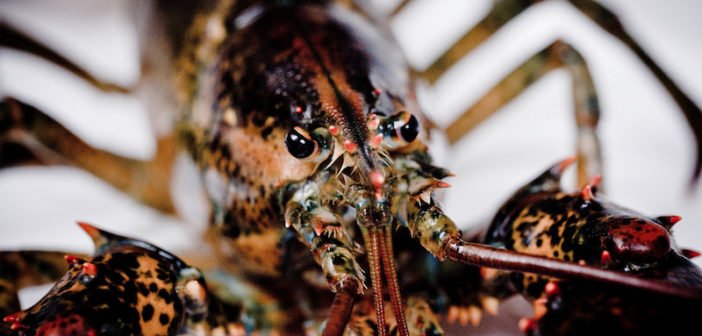For the first time ever, a fishmonger in Australia has been convicted of cruelty toward a lobster. Nicholas Seafoods, based in the city of Sydney, pleaded guilty to violating the New South Wales Prevention of Cruelty to Animals Act for butchering live, unanesthetized lobsters with a band saw. The company was fined fifteen hundred Australian dollars.

Lobster in Sydney fish market. Image credit Stuart Boreham, CC BY-NC-ND 2.0
Crustaceans – including lobsters, crabs, and shrimp – have been covered under the Act since 1997. Several other Australian states also prohibit cruelty toward crustaceans. New South Wales animal welfare guidelines recommend that crustaceans be immersed in ice water to anesthetize them prior to killing, and that they be slaughtered quickly by cutting directly along the central nervous system.

Image credit melanie cook, CC BY-NC-ND 2.0
Pain responses are well documented in crabs, crayfish, and prawns, based on scientific observations of their behavior and physiology when injured.[1] Certain distantly related arthropods are now known to be highly intelligent, including bees, who can memorize patterns, communicate using body language,[2] and even learn to use tools. Although it is not known whether crustaceans consciously experience suffering, if they possess similar neurological capacities to insects, it seems wise to err on the side of caution in how they are treated.
(Featured image credit Tatiana Vdb, CC BY 2.0)
Works Cited:
[1] Elwood, R.W.; Barr, S.; Patterson, L. (2009). Pain and stress in crustaceans? In Applied animal behaviour science, 118(3-4), 128-136 [2] Narby, J. Intelligence in Nature. New York, NY: Penguin.




